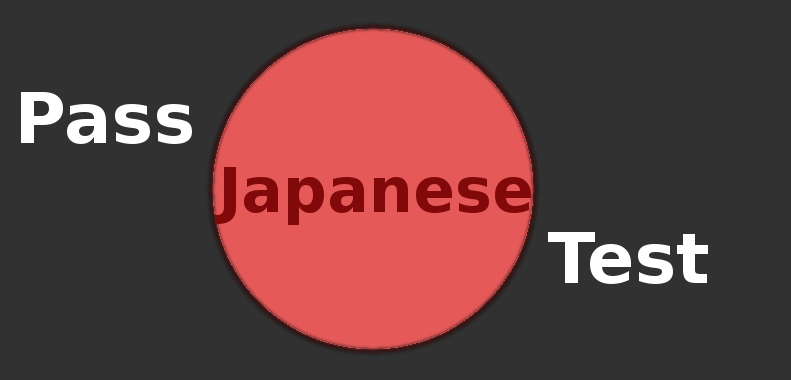In this post I’ll give you some JLPT grammar strategies that I used when taking the test. Before getting into some strategies for each question type, here is the biggest pointer.
Study Before The Exam
The best thing you can do to get more questions correct in the grammar section is to learn all the grammar patterns before taking the exam. I know this is not a strategy you can employ during the test, but it is the most effective way to get more questions correct.
I think that grammar gives you the most bang for your study time. Unlike vocabulary, where there are thousands of words and kanji to remember, there are only a few hundred grammar patterns. This means that it is possible to learn all the patterns that will appear on the test. Just load these into your anki deck and study them along with any kanji/vocab you have. (See my top 5 JLPT study tools for more about anki or get the deck I used to study for the N1.)
Now, I’ll go over strategies that are specific to each question type below. If you are unfamiliar with the sections of the test, check out my explanation of the JLPT test sections.
1. Selecting Grammar Form
This type of question is basically fill in the blank for grammar. With that in mind, all usual fill in the blank strategies apply.
Try all of the choices
When looking at the answer choices, there may be some you are unfamiliar with. Rather than focusing on those, focus on the choices whose meaning you do know. Read the sentence with each of the choices and eliminate the ones that are incorrect or seem strange. One hint is that the sentence must not only make sense grammatically, but must also make sense logically and culturally.
Because, and/or, but
This strategy applies to blanks that come in the middle of a sentence. I like to categorize grammar patterns that come in the middle of a sentence into 3 types: causal (ex. because), additive (ex. and, or), or opposing (ex. but). These are not linguistically correct categories, but I believe they are well suited to helping you take the JLPT.
Read the first and second part of the sentence. What is the relationship? I try putting “because”, “and/or”, and “but” into the blank to see which one fits. Label each answer choice with “because”, “and/or”, or “but”. Now, eliminate any choices that do not fall into the chosen category.
2. Sentence Composition
In this question type you get a sentence with four consecutive blanks where one blank is starred. You have to put the answer choices in the correct order to complete the sentence. I personally find this to be the hardest grammar question type. I find that it takes me a long time to arrive at an answer, and even then I am often wrong.
Look at the edges
Focus on the first and last blanks to eliminate some choices. Given 4 blanks, there are statistically 24 ways to order the given words/phrases. You can eliminate some of the possibilities without knowing the full sentence and simply looking at the first and last blanks. For example, if the word after the last blank is a noun, then the last blank must be something that can modify a noun or a conjunction. It is unlikely that the last blank will be a noun.
Finish the sentence in English
Figure out what the finished sentence is trying to say. You have all the pieces. Forget about the Japanese for a moment and construct a sentence in English (or your native language) that makes sense. Hint: it should also make sense from a Japanese cultural perspective. Now try to put the pieces in order to express your English sentence. I find that by doing this i am often left with 2 possible sentence orders. If that is true, I now have a 50/50 chance of getting the answer correct.
Don’t waste time
I know from personal experience that this question type can take a long time. Try the above strategies, but remember that this is only one of many questions on the exam. Be speedy, guess, and move on.
3. Text Grammar
This question type is another form of fill in the blank with grammar. The twist is that each blank appears as part of a long passage.
Get to the first blank
The first blank may be several paragraphs into the passage. You don’t get any points for reading and understanding the full passage. So skim–or even skip–to the first blank.
Don’t get caught up in reading
It is easy to become focused on pronouncing the Japanese. However, you don’t get any points for knowing the readings of kanji in this section. Focus on answering the questions, even if you have to think in English.
Try all of the choices
Just like 1. Selecting Grammar Form, try each choice in the blank and eliminate the ones that sound strange or you know to be incorrect.
Checkout the rest of the JLPT Playbook
